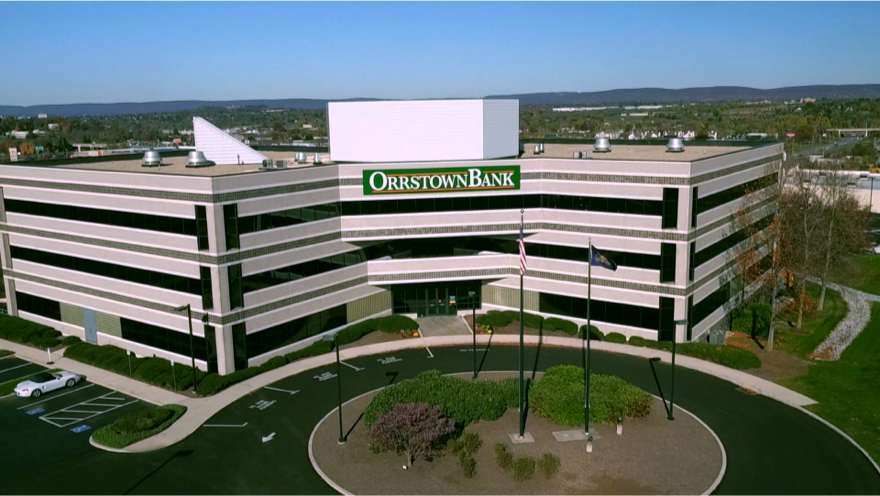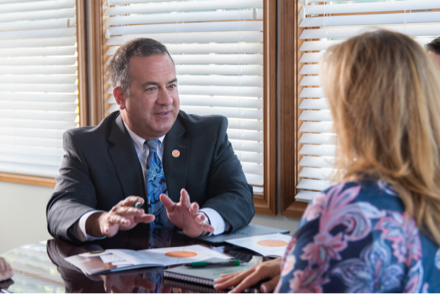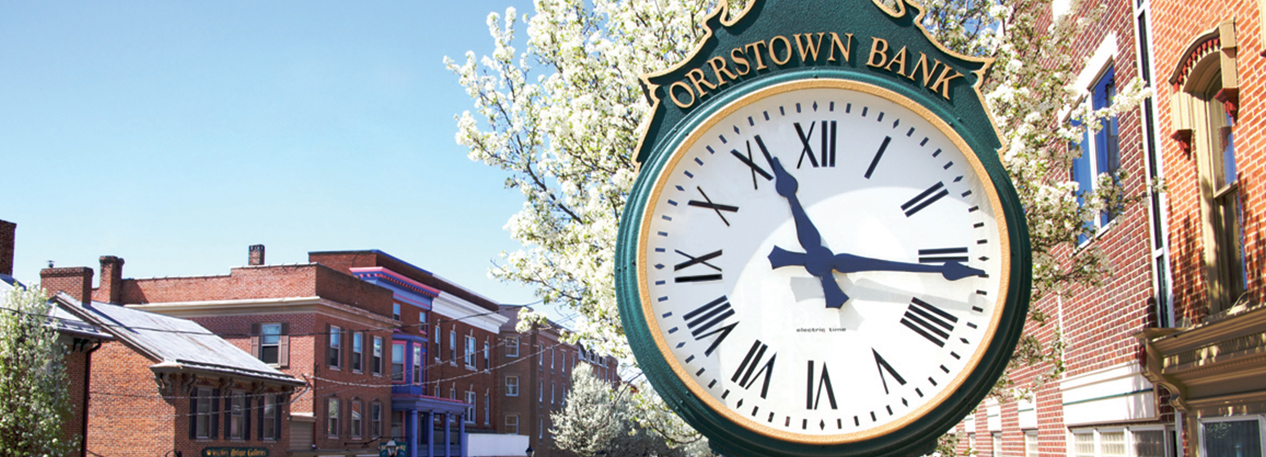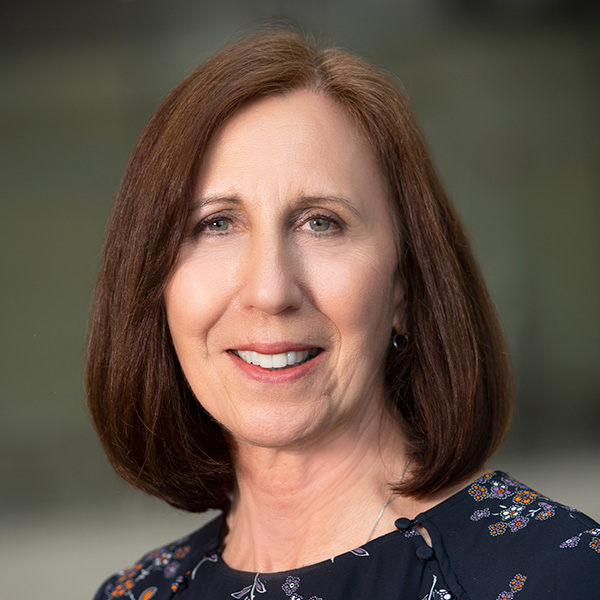A crisis plan may look solid on paper, but the ultimate test is what happens during a real crisis. This was especially true in March 2020 as the first effects of the COVID-19 pandemic began to unfold in the Third District. Local businesses were shuttered, unemployment rates soared, grocery supplies grew scarce. And the impact on the economy and financial institutions continued to escalate, not only in the Third District, but nationwide and around the world.
The 18 state member banks that the Federal Reserve supervises in the Third District quickly felt the impact of the pandemic. Orrstown Bank, with headquarters in Shippensburg/Harrisburg, PA, was one of those banks.

“I’m extremely proud of our organization and how we have moved through the pandemic,” said Orrstown Bank President and CEO Thomas Quinn Jr. “And candidly, I am really thankful for our partnership with the Federal Reserve and State of Pennsylvania. They answered our questions early on and provided good guidance.”
Customizing the Crisis Plan
Quinn is no stranger to crises. He joined Orrstown Bank during the Great Recession in 2009, and before that, as president of Citibank New York State, he helped clients in Toronto navigate the avian flu epidemic in 2003‒2004. And as the COVID-19 pandemic began, Quinn had a crisis plan in place for Orrstown Bank’s 437 employees in 25 banking offices across Cumberland, Franklin, Perry, Dauphin, Berks, and Lancaster counties. But the depth and breadth of this crisis was unprecedented.
“We incorporated many of the cornerstones of those previous crisis programs into our pandemic plan,” said Quinn. “But the pandemic created a completely different situation.” Unlike crises in the past, this wasn’t a single event that ended after a few days or weeks.
Quinn and his team created a pandemic committee that has met more than 118 times during the pandemic, with company leaders reporting into Quinn and to the board, providing updates, and making recommendations for the safety and well-being of clients and employees. That included closing down bank lobbies, installing Plexiglas at teller windows and customer service desks, and aligning strict cleaning protocols to prevent initial and subsequent outbreaks. “We have really strived to have a risk management culture that is really top shelf,” he said.

Community banks such as Orrstown Bank play a vital role
in the region that was more important than ever in 2020.
Maintaining internal bank operations was critical. Orrstown Bank had invested millions in technology since 2015 so employees could work from home, if necessary, and now had to ensure that all systems were working well. The leadership team kept the bank employees engaged and acknowledged their hard work and long hours meetings via conference calls, highlighting individual and team achievements in Monday Morning Spotlight meetings, sending flowers to employees whose families had been touched by COVID-19, and delivering pizzas for lunch.
Becoming the Community’s Trusted Advisers
The basic question for Quinn and his team was finding a way to embrace what everyone was experiencing and helping people through the process. “Not only did we become trusted advisers in the community, we were their neighbors, attended church with them, saw them in the grocery store,” he said, “and we were trying to save their businesses.”

Bill Spaniel and his team checked
in with banks and provided
guidance during the pandemic.
Rolling out the Paycheck Protection Program (PPP) created opportunities for small business, but it really stretched the organization. Employees worked around the clock to meet the need. “We took every opportunity to help those in the community who needed help whether they were clients or not,” said Quinn. “It wasn’t unusual for my phone to ping at 1:30 to 2:00 in the morning. I had one midnight call from a client who started crying and thanking me for helping her get a PPP loan because she hadn’t been able to get one anywhere else.”
Another call strengthened Quinn’s lifeline to the Federal Reserve. Quinn remembers answering his cell phone during the first week of working from home. It was Bill Spaniel, senior vice president and lending officer at Philadelphia Fed. “He asked how I was doing,” he said, noting that Bill Wisser, vice president of the Bank’s safety and soundness unit in the Supervision, Regulation, and Credit Department also called soon after to check in.

Bill Wisser builds relationships with
community banks in our District.
“I’ve always had a good relationship with them both,” said Quinn, who is a former member of the Philadelphia Fed’s Community Depository Institutions Advisory Council and met with Wisser on a quarterly basis before the pandemic. “But this was different,” said Quinn. “It was very much on a personal level, not just asking how the bank was doing.”
For Quinn, that was a turning point. “You know, it’s the little things that you do for people to let them know you appreciate them,” he said. “That was exactly what was happening on those calls … to take a moment and check in on how we were doing.”
You know, it’s the little things that you do for people to let them know you appreciate them. … That was exactly what was happening on those calls … to take a moment and check in on how we were doing.
Thomas Quinn Jr.
As Orrstown Bank started to process PPP loans, Quinn reached out to Spaniel and Wisser to review Orrstown’s approach to capital modeling (examining possible losses from defaulted loans, financial market fluctuations, and business operations) and the resulting pressure on the bank’s leverage ratio (the proportion of bank debts compared with its equity/capital). When Quinn asked whether these pressures were happening at other banks, the guidance he received was simple and straightforward: “Just keep doing the right thing for your clients.”
For Quinn, “Bill’s response was very welcomed and very much appreciated by everyone on our team. Because you are dealing with people’s emotions and you’re working with a team, it’s important that you can give them a straight answer in order for everyone to move forward confidently.”
The sound supervisory guidance that the Philadelphia Fed provided helped Orrstown weather ongoing challenges. “You are looking at where you are, where the economy is going, and what’s happening,” said Quinn. “The Fed provided good feedback, relative to where we were, where the country was, where the economy was, which was extremely helpful.”
The Fed provided good feedback, relative to where we were, where the country was, where the economy was, which was extremely helpful.
Thomas Quinn Jr.
Meeting Client Needs Head-On
Orrstown Bank took a proactive approach early in the pandemic, opting to meet with each of the bank’s commercial million-dollar-plus clients, asking what challenges they were encountering and what they needed. The bank also reached out to nonprofits in the area and met with companies interested in PPP loans. The bank’s radio and television ads helped spread the word, including in the Hispanic community with assistance from one of the bank’s Spanish-speaking employees. The outreach efforts underscored the bank’s intent to help if someone had an issue. “As a result,” said Quinn, “we did 3,200 loans and generated $467 million for the bank, and 70 percent of those 3,200 loan recipients were new to the bank. That means that they had tried somewhere else but weren’t able to get a loan. Orrstown met their need.”
Keeping the banking industry informed during the pandemic included communications from the Philadelphia Fed, such as update emails on Federal Reserve programs and newsletters, especially SRC Perspectives, from Spaniel and his team. Quinn reports that he forwards those news and update communications to the executive team and board members, who then frequently ask good questions or share trends they are seeing.
Quinn credits the Federal Reserve with helping Orrstown Bank build a solid foundation that started years before the pandemic. “The relationship we had established helped us get through some challenges during the pandemic,” he said. “We had forged an understanding of what it takes to have the right kind of organization.” Orrstown was a bank with $1.3 billion in assets but was asked to think about setting the bar higher and building itself to a $2 billion, $5 billion, or $10 billion bank. Quinn said the board took that approach, working with a consultant to take the bank through a risk program and get assistance to expand the bank’s portfolio of financial instruments. “As a result, we assembled a broader and more sophisticated institution,” he said, noting that the pandemic has served to strengthen the relationship between the bank and the Philadelphia Fed.
The Fed’s outreach to bankers was one of candor and care, said Quinn. “Without the Fed’s assistance and guidance, we would have been flying blind and may have gone in the wrong direction. They were there to help and provide guidance at a time when it was needed the most.”
Without the Fed’s assistance and guidance, we would have been flying blind and may have gone in the wrong direction. They were there to help and provide guidance at a time when it was needed the most.
Thomas Quinn Jr.

